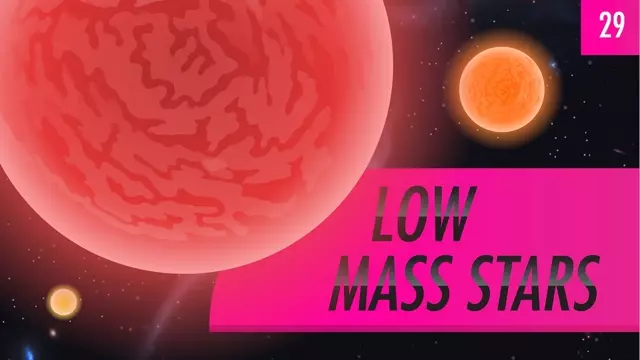2015-08-20
[public] 1.10M views, 18.4K likes, 213 dislikes audio only
Today we are talking about the life -- and death -- of stars. Low-mass stars live a long time, fusing all their hydrogen into helium over a trillion years. More massive stars like the Sun live shorter lives. They fuse hydrogen into helium, and eventually helium into carbon (and also some oxygen and neon). When this happens they expand, get brighter, and cool off, becoming red giants. They lose most of their mass, exposing their cores, and then cool off over many billions of years.
Check out the Crash Course Astronomy solar system poster here: http://store.dftba.com/products/crashcourse-astronomy-poster
--
Chapters:
Introduction: Low Mass Stars 00:00
Hydrogen Fusion 1:21
Life Cycle of Low Mass Stars 2:22
Larger Stars (Like Our Sun) Live Shorter Lives 3:10
Fueled By Fusion 3:58
Red Giants 5:45
White Dwarfs 8:08
The Fate of the Earth 8:59
Review 11:07
--
PBS Digital Studios: http://youtube.com/pbsdigitalstudios
Follow Phil on Twitter: https://twitter.com/badastronomer
Want to find Crash Course elsewhere on the internet?
Facebook - http://www.facebook.com/YouTubeCrashCourse
Twitter - http://www.twitter.com/TheCrashCourse
Tumblr - http://thecrashcourse.tumblr.com
Support CrashCourse on Patreon: http://www.patreon.com/crashcourse
--
PHOTOS/VIDEOS
Stars http://skycenter.arizona.edu/sites/skycenter.arizona.edu/files/n6522_32in.jpg [credit: Adam Block/Mount Lemmon SkyCenter/University of Arizona]
The Sizes of Stars http://www.eso.org/public/usa/images/eso1030c/ [credit: ESO/M. Kornmesser]
Fusion in the Sun https://commons.wikimedia.org/wiki/File:FusionintheSun.svg [credit: Borb, Wikimedia Commons]
Mega Flares http://scitechdaily.com/images/Swift-Mission-Observes-Mega-Flares-from-a-Mini-Star.jpg [credit: NASA’s Goddard Space Flight Center/S. Wiessinger]
Proxima Centauri https://www.spacetelescope.org/images/potw1343a/ [credit: ESA/Hubble & NASA]
Physics in the Core http://solarscience.msfc.nasa.gov/images/cutaway.jpg [credit: NASA / Marshall Space Flight Center]
Three Years of SDO Images http://svs.gsfc.nasa.gov/cgi-bin/details.cgi?aid=11255 [credit: NASA's Goddard Space Flight Center/SDO]
Sun & Red Giants http://kepler.nasa.gov/files/mws/kasc3.jpg [credit: NASA]
Sun as Red Giant https://commons.wikimedia.org/wiki/File:Sun_red_giant.svg [credit:Oona Räisänen, Wikimedia Commons]
Gone with the Wind https://www.eso.org/public/usa/images/wr124/ [credit: ESO]
Expanding & cooling https://www.cfa.harvard.edu/sites/www.cfa.harvard.edu/files/images/pr/2009-23/1/base.jpg [credit: ESO/L. Calçada]
Looking down a barrel of gas at a doomed star http://hubblesite.org/newscenter/archive/releases/1999/01/image/a/ [credit: The Hubble Heritage Team (AURA/STScI/NASA)]
Expanding star orbit http://www.nasa.gov/centers/goddard/images/content/415775main_earthlike-exoplanet-full.jpg [credit: SO/L. Calçada]
Red Giant Earth https://commons.wikimedia.org/wiki/File:Red_Giant_Earth.jpg [credit: Fsgregs, Wikimedia Commons]
Crab Nebula https://en.wikipedia.org/wiki/Crab_Nebula#/media/File:Crab_Nebula.jpg [credit: NASA, ESA, J. Hester and A. Loll (Arizona State University)]
/youtube/video/jfvMtCHv1q4?t=0
/youtube/video/jfvMtCHv1q4?t=81
/youtube/video/jfvMtCHv1q4?t=142
/youtube/video/jfvMtCHv1q4?t=190
/youtube/video/jfvMtCHv1q4?t=238
/youtube/video/jfvMtCHv1q4?t=345
/youtube/video/jfvMtCHv1q4?t=488
/youtube/video/jfvMtCHv1q4?t=539

